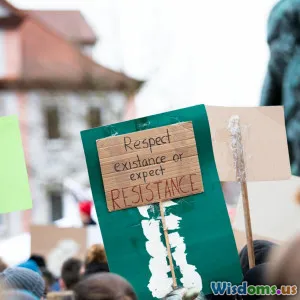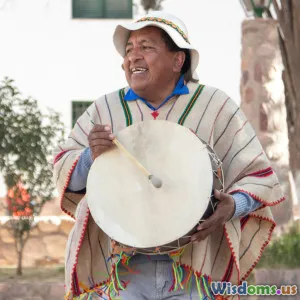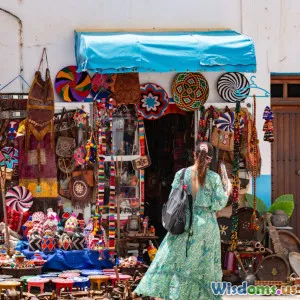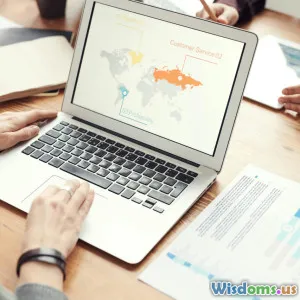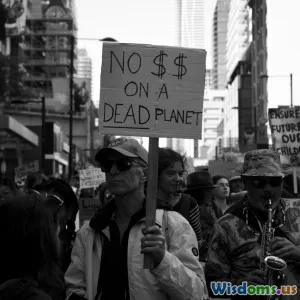
How Social Media Fuels Transnational Activist Networks
8 min read Explore how social media empowers and connects transnational activist networks worldwide, transforming global advocacy through digital solidarity. (0 Reviews)
How Social Media Fuels Transnational Activist Networks
In an era defined by connectivity, activists are no longer confined to localized or national campaigns. The rise of social media has been a game-changer, fostering transnational networks that bridge geographical and cultural divides to tackle global issues collaboratively. But how exactly does social media fuel these networks? What unique advantages does it bring, and what challenges remain? This article explores these questions through a detailed examination of the digital foundations underpinning the new landscape of transnational activism.
Breaking Down Borders: The Nature of Transnational Activist Networks
Transnational activist networks (TANs) are coalitions of individuals and organizations that operate beyond national boundaries to promote shared causes such as human rights, environmental sustainability, gender equality, and social justice. Before the digital age, forming and sustaining these networks required substantial resources, time, and often formal institutions to maintain cohesion.
Social media has disrupted this traditional model by providing platforms that enable continuous communication and mobilization without the need for physical proximity, formal charters, or significant financial backing. This virtual proximity accelerates the exchange of ideas, strategies, and solidarity messages—the lifeblood of successful activism.
How Social Media Empowers Transnational Networks
1. Speed and Reach – Instant Global Communication
Social media platforms such as Twitter, Facebook, Instagram, TikTok, and WhatsApp allow activists to disseminate messages instantly to global audiences. For instance, the #BlackLivesMatter movement, which sparked worldwide protests following incidents of police brutality in the U.S., leveraged Twitter and Instagram to galvanize international support in real time.
The rapid spread of information also enables network members to respond swiftly to emerging issues or crises. During the Roșia Montană mining protests in Romania, local activists raised international awareness through Facebook pages, prompting global environmentalists to join pressure campaigns despite being thousands of miles away.
2. Democratization of Voice and Accessibility
Unlike traditional media or formal organizations, social media's low barriers to entry empower marginalized groups otherwise excluded due to economic, political, or social barriers. Indigenous activists in the Amazon rainforest, for example, who once struggled to broadcast their struggles, now use Instagram and YouTube documentaries shared worldwide to solicit support and pressure governments and corporations.
This democratization strengthens transnational networks by diversifying perspectives and adding authenticity, giving a more comprehensive representation of grassroots issues.
3. Resource Mobilization and Collective Action Coordination
Coordinating international protests, fundraising drives, and awareness campaigns has become more feasible. The global climate strikes initiated by Greta Thunberg in 2018 exemplify this: Facebook events coordinated synchronized demonstrations across continents, while crowdfunding platforms linked via social media supplied resources to organizers.
Data from the Fridays for Future movement indicate that over 4 million young people participated worldwide in 2019 alone—a feat facilitated largely by social media synchronization.
4. Knowledge Sharing and Capacity Building
Transnational networks benefit from the ease of sharing best practices, toolkits, and expert advice via social media. Platforms such as Twitter chats, Facebook groups, and specialized forums allow activists to discuss legal strategies, campaign tactics, and security measures.
For example, during the Arab Spring, online tutorials on digital security helped activists safeguard communications from state surveillance, ultimately enabling more resilient and adaptive movements.
5. Building Transnational Solidarity and Empathy
Social media narratives invite users worldwide to witness struggles beyond their borders, cultivating empathy and moral responsibility. The #MeToo movement is a prime case: women across the globe shared stories of sexual harassment, contributing to a global reckoning transcending cultural contexts. This shared digital experience galvanized activists in countries ranging from India to France to pursue reforms.
Real-World Examples: Social Media in Action Across Borders
The Arab Spring:
A hallmark of the power of digital activism, the revolutions from Tunisia to Egypt involved extensive use of Facebook and Twitter to organize protests and expose abuses. While the outcomes varied, the movement demonstrated how social media can unite diverse groups across an entire region in pursuit of democratic change.
#FridaysForFuture and Climate Activism:
Global climate youth activism owes much of its spread and momentum to social media. Greta Thunberg’s solitary protest in Stockholm transformed into a worldwide movement through Twitter hashtags and Instagram stories. These platforms not only mobilized millions but helped circumvent mainstream media filters, giving the youth an unmediated voice.
Hong Kong Protests 2019:
Though facing heavy censorship attempts, activists utilized encrypted messaging apps and social media to organize mass demonstrations, share footage of clashes, and attract international attention, highlighting social media’s role in sustaining transnational pressure despite authoritarian constraints.
Challenges and Limitations
Despite the empowering capacity of social media, substantial challenges persist.
-
Misinformation and Disinformation: The rise of fake news can fracture movements or derail campaigns by spreading contradictory narratives.
-
Surveillance and Repression: Authoritarian regimes increasingly monitor and disrupt online activities, targeting activists with digital attacks or arrests.
-
Fatigue and Slacktivism: Easy online engagement sometimes substitutes for deeper commitment or actions, weakening real-world impact.
-
Platform Dependency: Reliance on commercial social media platforms that can change policies or algorithms risks network sustainability.
Conclusion: Beyond the Screen – Toward a Digitally Connected Activism Future
Social media has undoubtedly transformed transnational activism. It accelerates communication, democratizes participation, coordinates collective action, fosters capacity building, and creates global empathy. These network advantages reshape advocacy, making it more agile, accessible, and inclusive.
However, activists must also navigate the pitfalls of digital misinformation, repression, and engagement fatigue. Successful transnational networks combine digital tools with offline organizing, legal activism, and coalition building.
Understanding these dynamics equips activists, researchers, and policymakers to foster resilient, effective transnational networks that can tackle the pressing global challenges of our time—from climate change to social justice.
In a world increasingly defined by both digital connections and global crises, social media doesn’t just fuel transnational activist networks—it embodies a new frontier of participatory democracy and collective empowerment.
Rate the Post
User Reviews
Popular Posts










